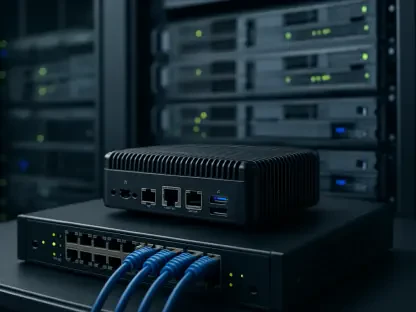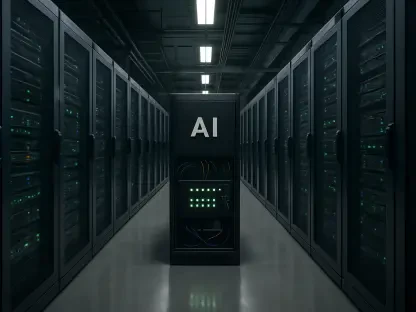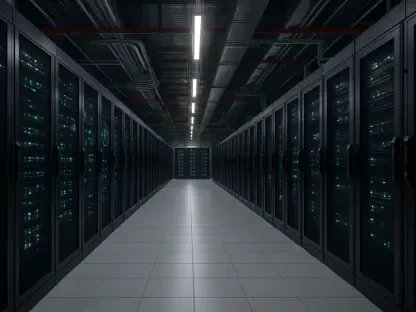Transitioning from a Managed Service Provider (MSP) to a Managed Security Service Provider (MSSP) presents a significant opportunity for businesses looking to capitalize on the rising demand for cybersecurity solutions. However, this shift is no simple task; it requires a thorough understanding of cybersecurity, detailed planning, and strategic execution. The cybersecurity landscape is complex and constantly evolving, which means that MSPs must be prepared to invest in specialized training, certifications, and strategic partnerships. This investment will help them acquire the knowledge and skills necessary to offer robust managed security services that meet the sophisticated demands of today’s cyber threats. By navigating this transition effectively, MSPs can enhance client value and establish a competitive edge in the market.
Understanding the Complexity of Cybersecurity
One of the biggest challenges MSPs face when transitioning to MSSPs is underestimating the complexity of the cybersecurity landscape. Unlike providing standard IT services, managed security solutions require a deep understanding of various cybersecurity facets. To build this expertise, MSPs need to invest in rigorous training programs that cover everything from threat detection and vulnerability management to advanced security technologies. Acquiring certifications such as CISSP (Certified Information Systems Security Professional) or CISM (Certified Information Security Manager) is essential. These certifications not only validate the knowledge and skills of your team but also build client confidence in your capabilities as an MSSP.
Strategic partnerships are another crucial element in navigating this complexity. Collaborating with established cybersecurity vendors can provide access to cutting-edge tools and technologies, enhancing your service offerings. Moreover, these partnerships can offer valuable insights and support, ensuring that your solutions remain effective against evolving threats. This proactive approach to staying updated with the latest cybersecurity trends and technologies is paramount. The dynamic nature of cyber threats means that staying stagnant is not an option; continuous learning and adaptation are vital for success.
Delivering Customized Security Solutions
The necessity of offering customized security solutions cannot be overstated in the MSP to MSSP transition. Cybersecurity needs are not one-size-fits-all; each client’s unique risk profile and compliance requirements demand tailored strategies. MSPs must prioritize understanding the specific needs and challenges faced by each client to develop customized security solutions that address these concerns effectively. This often involves conducting thorough risk assessments and compliance audits to identify vulnerabilities and potential threats unique to each client’s industry and operational landscape. By offering tailored strategies, MSPs can ensure that their managed security services provide maximum protection and value to their clients.
Generic solutions are generally ineffective and may lead to significant security gaps, resulting in breaches and loss of client trust. Therefore, ensuring that each solution is precisely aligned with a client’s requirements is imperative. Service Level Agreements (SLAs) should clearly outline the scope of services, response times, and performance metrics, setting realistic expectations for clients. Transparency in these agreements fosters trust and demonstrates the MSSP’s commitment to providing reliable and effective security services. Furthermore, MSSPs should continually review and update these SLAs to reflect any changes in the client’s environment or evolving cybersecurity threats.
Building a Robust Technology Infrastructure
A critical aspect of the transition to an MSSP is the significant upgrade of IT infrastructure to support advanced cybersecurity services. Effective managed security requires deploying a sophisticated technology stack that includes Security Information and Event Management (SIEM) systems, Endpoint Detection and Response (EDR) tools, Security Orchestration, Automation, and Response (SOAR) platforms, Configuration Management Databases (CMDB), and User and Entity Behavior Analytics (UEBA). These tools are not just nice-to-have additions but fundamental components that enable an MSSP to deliver comprehensive security monitoring, threat detection, and incident response.
Investing in this advanced technology infrastructure ensures that your cybersecurity offerings stand up to the rigorous demands of today’s threat landscape. Furthermore, seamless integration of these tools is essential to provide cohesive and efficient security operations. MSPs must focus on creating a unified security environment where these tools work together harmoniously, providing centralized visibility and control over all security-related activities. This integration can streamline operations, reduce response times, and enhance the overall effectiveness of your security solutions.
Importance of Incident Response Plans
Establishing a robust incident response plan is indispensable for MSSPs aiming to offer top-tier cybersecurity services. This plan should outline precise steps to manage and mitigate security breaches, detailing actions to limit damage, communicate with stakeholders, and restore operations promptly. In the event of a cybersecurity incident, having a well-structured response plan can significantly reduce the impact on the client’s business, helping to maintain their trust during crises. Regularly updating and testing the incident response plan ensures its effectiveness and readiness to tackle emerging threats.
Additionally, incident response plans should include clear protocols for post-incident analysis and improvement. Understanding the root cause of an incident and identifying areas for enhancement can prevent future occurrences and strengthen overall security posture. Educating clients about these response plans and involving them in regular drills can foster a collaborative approach to cybersecurity, ensuring that both the MSSP and the client are prepared and aligned in their response efforts. This collaborative effort can significantly enhance the speed and efficacy of incident resolution.
Educating Clients on Cybersecurity Measures
Client education is an often overlooked but crucial element in the successful transition from MSP to MSSP. Ongoing communication and education about the cybersecurity measures deployed can significantly enhance client understanding and trust. Clients who are informed about the strategies and tools used to protect their data are more likely to appreciate the value of the services provided and comply with necessary security protocols. Regular updates, training sessions, and informative newsletters can help maintain client engagement and foster a security-conscious culture within their organization.
Moreover, these educational efforts can empower clients to identify potential threats and take appropriate preventive actions, further strengthening their security posture. Building this knowledge base within client organizations not only enhances their cybersecurity awareness but also positions the MSSP as a trusted advisor and partner. This trusted relationship can lead to long-term engagements and positive client referrals, contributing to the overall success of the MSSP.
Conclusion: Future Considerations for MSSPs
One of the biggest hurdles MSPs face when evolving into MSSPs is underestimating the complexity of the cybersecurity landscape. Unlike standard IT services, managed security solutions demand a deep understanding of various cybersecurity aspects. To develop this expertise, MSPs need to invest in comprehensive training programs that cover everything from threat detection and vulnerability management to advanced security technologies. Earning certifications like CISSP (Certified Information Systems Security Professional) or CISM (Certified Information Security Manager) is crucial. These certifications not only affirm your team’s knowledge and skills but also enhance client trust in your abilities as an MSSP.
Additionally, strategic partnerships play an essential role in managing this complexity. Collaborating with established cybersecurity vendors grants access to cutting-edge tools and technologies, thereby enhancing your service offerings. These partnerships also provide valuable insights and support, ensuring your solutions remain effective against evolving threats. Keeping pace with the latest cybersecurity trends and technologies is critical. The dynamic nature of cyber threats means you must continually learn and adapt to maintain success.









